
Halictidae is the second-largest family of Anthophila bees. Halictid species occur all over the world and are usually dark-colored and often metallic in appearance. Several species are all or partly green and a few are red; a number of them have yellow markings, especially the males, which commonly have yellow faces, a pattern widespread among the various families of bees. The family is distinguished by the arcuate basal vein found on the wing.

Sphecodes is a genus of bees from the family Halictidae, the majority of which are black and red in colour and are colloquially known as "blood bees". Sphecodes bees are cleptoparasitic on other bees, especially bees in the genera Lasioglossum, Halictus and Andrena. The adults consume nectar, but because they use other bees' provisions to feed their offspring they do not collect pollen.

Sphecodes davisii is a species of sweat bee in the family Halictidae.

Augochlorella is a genus in the bee family Halictidae, commonly called sweat bees. They display metallic coloration, ranging from reddish to gold to bluish green, as is typical for other genera in the tribe Augochlorini.
Sphecodes mandibularis is a species of sweat bee in the family Halictidae.
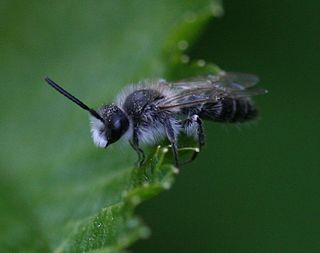
The bearded miner bee is a species of miner bee in the family Andrenidae. It is found in Europe & Northern Asia and North America. Other common names include the long-lipped andrena and the sandpit mining bee.
Sphecodes confertus is a species of sweat bee in the family Halictidae.

Hoplitis is a genus of bees in the family Megachilidae. There are more than 380 described species in Hoplitis.
Sphecodes heraclei is a species of sweat bee in the family Halictidae.

Anthidiellum notatum, the northern rotund-resin bee, is a species of bee in the family Megachilidae. It is found in North America.
Tetraloniella is a genus of long-horned bees in the family Apidae. There are more than 100 described species in Tetraloniella.
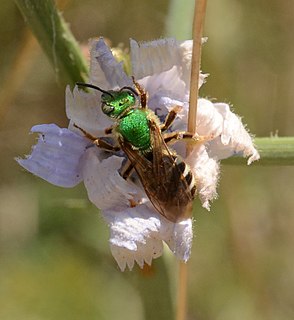
Agapostemon virescens, the bicolored striped-sweat bee, is a species of sweat bee in the family Halictidae. It is found in North America.
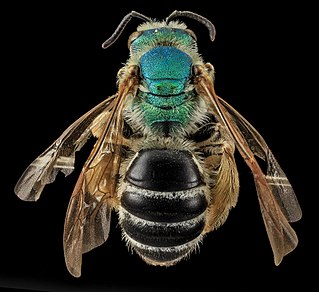
Agapostemon coloradinus, the Colorado striped-sweat bee, is a species of sweat bee in the family Halictidae.
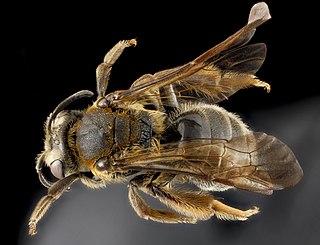
The Appalachian miner bee is a species of miner bee in the family Andrenidae. Another common name for this species is Alleghany andrena. It is found in North America.
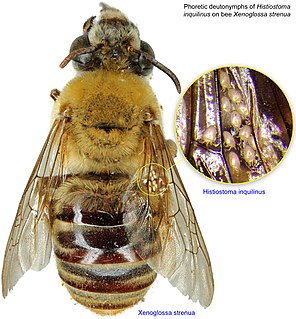
Xenoglossa is a genus of large squash bees in the family Apidae. There are about 11 described species in Xenoglossa.
Sphecodes aroniae is a species of sweat bee in the family Halictidae.
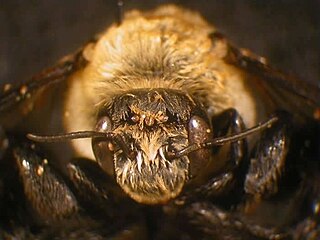
Ptilothrix bombiformis, known generally as the hibiscus bee or eastern digger bee, is a species of chimney bee in the family Apidae. It is found in Central America and North America.
Sphecodes solonis is a species of sweat bee in the family Halictidae.
Xanthothrix ranunculi is a species of moth in the family Noctuidae. It is found in North America.
Sphecodes johnsonii, or Johnson's sphecodes, is a species of sweat bee in the family Halictidae.












